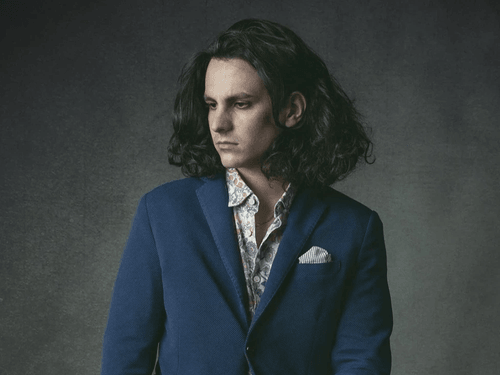
Artist to Inspire - Pietro Campagnoli
Pietro Campagnoli - Artist | Sculptor | Turin, Italy
With my sculptures I create “casts” with blankets wet with gypsum, placing them on living bodies and waiting for them to solidify. In these casts I try to reproduce the shape of the human being, like a photograph of the bodies.
REVEALING ABOUT THE SCULPTOR
By Pietro Campagnoli
PIETRO CAMPAGNOLI is born in Turin in 1994, where he lives and works. He’s graduated from Primo Liceo Artistico Statale of Turin. He attended at IED University, at Graphic Design. He graduated at Accademia Albertina of Fine Arts of Turin in New Technologies for the Arts, with 110 cum laude. He started working as an artist since September 2011, but he draws since he was a child. He exposed in Italy and Internationally in many galleries and foundations like CAMERA (centro italiano per la fotografia), Fondazione Dino Zoli (Forlì), London Art fair (selected by the director of the Fair), Education Department at Fondazione Merz, Palazzo Barolo (Turin), Palazzo Ducale (Genoa, Italy), Artrooms Seoul (Seoul), Fondazione Bevilacqua La Masa (Venice). He is an artist part of the art and social project “Arte plurale” and “Mai visti e altre storie”, sponsored by many foundations like “Fondazione Michelangelo Pistoletto”, “Dipartimento Educazione Castello di Rivoli” and “Dipartimento Educazione Fondazione Sandretto”.

With my sculptures I create “casts” with blankets wet with gypsum, placing them on living bodies and waiting for them to solidify. In these casts I try to reproduce the shape of the human being, like a photograph of the bodies.
Like an artist, brings always tried to understand and describe human feelings. I’ve got the Asperger syndrome, a form of autism that gave me a high Q.I. but bad relationship skills. In the High School i always had problems to understand the thoughts of my classmates and how I must relate with them. With my sculptures I create “casts” with blankets wet with gypsum, placing them on living bodies and waiting for them to solidify. In these casts I try to reproduce the shape of the human being, like a photograph of the bodies.

My works never have definite faces, because it is impossible for me to understand the emotions of the people, due to my syndrome. They are always empty, because the internal body has evolved and disappeared, and there only remained the envelope, like a chrysalis, but now the present individual has managed to overcome and improve his condition.

This is a metaphor of my course to understand human feelings. The individual human represented in the artwork, like a figurehead, remain immovable against the storm. The wind bring him down to the floor, but he doesn’t bend, like a reef against the ocean. My work is born by the attempt to represent the “individual evolution” and to describe metaphorically my past. I had a lot of social problems in the High School because of my syndrome, and I was victim of the bullies, my artworks remind me that the stormcan be fought and defeat, if an unwavering willpower supports your mind against the lashes of sensitive experiences, and if a good captain can be surrounded by a good crew. All my sculptures are unique because every human being is unique. The most violent experiences make us the most resilient individuals. It is not necessary to ask whether soul and body are one, just as it is not necessary to ask whether the wax and its shape are one, nor generally whether the matter of each thing and that of which it is the matter are one. For even if one and being are spoken of in several ways, what is properly so spoken of is the actuality. “All my moral and intellectual being is penetrated by an invincible conviction that whatever falls under the dominion of our senses must be in nature and, however exceptional, cannot differ in its essence from all the other effects of the visible and tangible world of which we are a self-conscious part.

The world of the living contains enough marvels and mysteries as it is—marvels and mysteries acting upon our emotions and intelligence in ways so inexplicable that it would almost justify the conception of life as an enchanted state. No, I am too firm in my consciousness of the marvelous to be ever fascinated by the mere supernatural which (take it any way you like) is but a manufactured article, the fabrication of minds insensitive to the intimate delicacies of our relation to the dead and to the living, in their countless multitudes; a desecration of our tenderest memories; an outrage on our dignity.” - Joseph Conrad, The Shadow Line.



